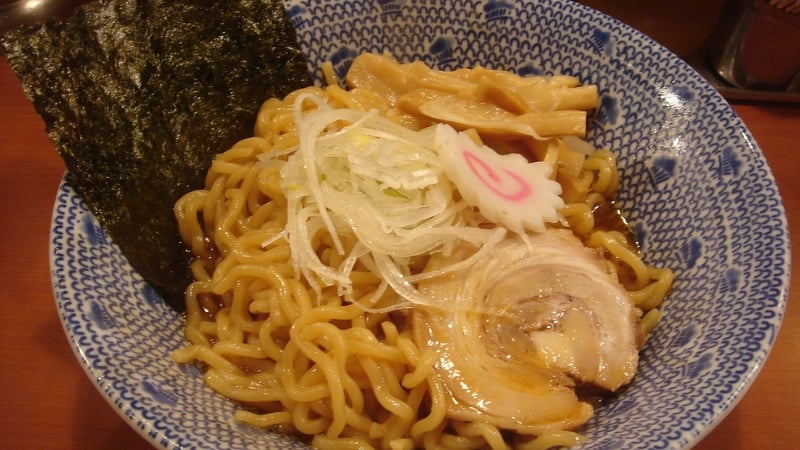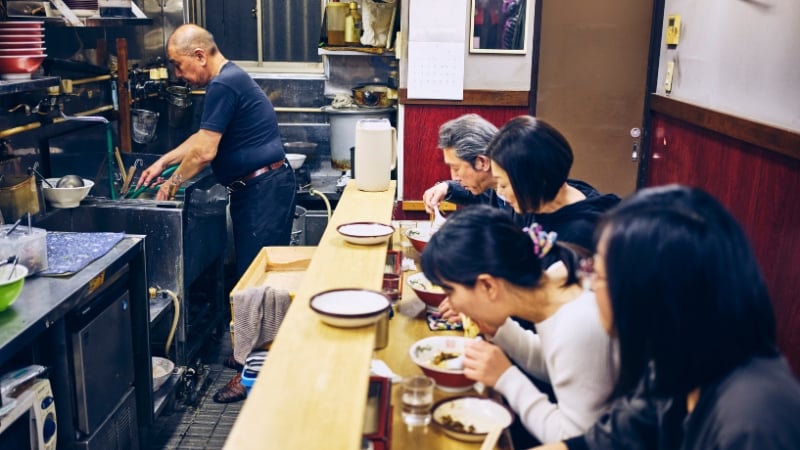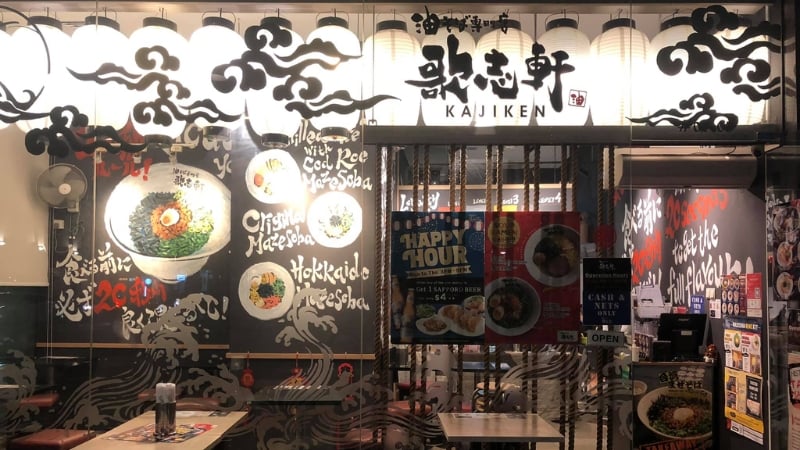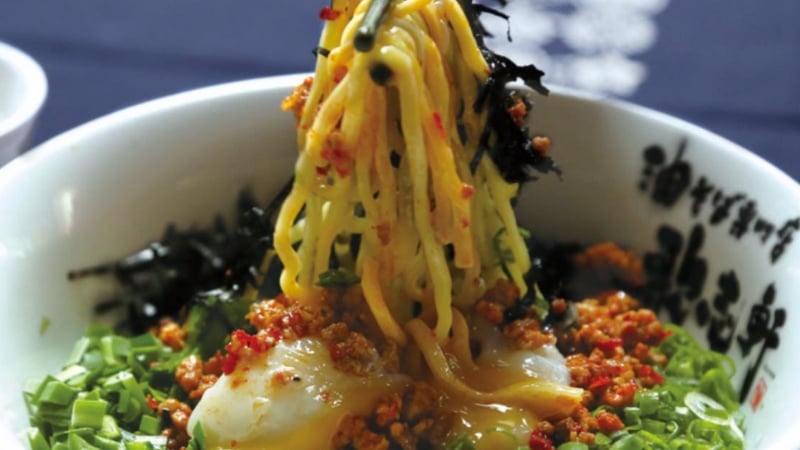Mention the words “Japanese cuisine” and a myriad of mouth-watering images of ramen, sushi, and green tea immediately pop into one’s mind (that is, unless you’ve been living under a rock your entire life, and your name is Patrick). However, in 2025, with Japanese cuisine becoming more globally diverse, a dish like Abura Soba might still elicit blank stares. When I mention it to my friends, they usually react as if I just spoke to them in some alien language while gesturing Mr. Spock’s Vulcan Salute from Star Trek. Abura soba… what?
Read more: 22 Unique Asian Delicacies You Must Try At Least Once
What is Abura Soba?

Image credit: Shibainu via Wikimedia Commons
The name Abura Soba literally translates to “Oil Buckwheat Noodles”, even though the noodles are more like ramen noodles rather than the Soba noodles we are all accustomed to. Originating from Tokyo in the 1950s, Abura Soba is, in essence, just dry ramen with a different type of sauce used in place of the soup. Diners can then add chilli oil and vinegar (as well as other ingredients depending on the shop) to spice up the dish to their own tastes.
A Hidden Gem in Tokyo

Image credit: RichLegg via Getty Images Signature
However, even among Japanese, Abura Soba is not really that well known, seeing that food streets are usually dominated by Izakayas (bars) and other Ramen and Sushi shops, with a few Abura Soba speciality shops lying around here and there.
Even my own Japanese teacher did not know what Abura Soba was until I explained it to her. During my exchange in Tokyo last year, I had the pleasure of discovering this small little shop next to my dormitory selling Abura Soba, and got hooked on it ever since. It remains, to this day, my favourite dish in Japan, as well as being the main reason I gained weight in Japan.
Discovering Abura Soba in Singapore
Alas, after my exchange ended, I left Japan with a tinge of regret, having only tried the Abura Soba shops near to my area instead of going further for a food hunt. Upon coming back, I was ecstatic to find out that there was an Abura Soba shop in Singapore as well! The fats in my tummy resonated with excitement and called out to me on a spiritual level, telling me that it was my destiny to try it. So I did. Was it as good as the one in Japan though?
Well, no. But it was pretty darn close.
The Kajiken Experience

Image credit: Kajiken Singapore | Official Facebook
The shop, Kajiken, is located next to Orchid Hotel in Tanjong Pagar, where many other authentic Japanese restaurants are currently situated at. After doing some research, it seems that Abura Soba has been sold in Singapore in other Ramen restaurants, usually as a soup-less alternative to their usual menu. Kajiken, however, is the first restaurant to specialise in only Abura Soba, and nothing else. It has since expanded to 4 outlets around the island!
After being seated in the small but cosy restaurant, you are presented with a menu with multiple different dishes, but in reality they are just the same noodles with different toppings. I usually go for the pork belly toppings, but some of my friends prefer the Taiwanese style with minced pork and vegetables.
After ordering, the waitress will serve you this small, alcoholic shot sized cup with soup inside for you to drink while waiting for your meal. The soup is just the right thickness for me and the taste is delicious, but not too overwhelming (I think it is chicken soup?).
After about 5 minutes or so of waiting and staring awkwardly at the chefs and reading the instructions on the wall approximately 27 times, you will be presented with a bowl of dry noodles with topping scattered on top. Your next sentence will be: “What, so that’s it?”
How to Enjoy Your Abura Soba

Image credit: Kajiken Singapore | Official Facebook
Nope, now it’s time to put that 27 times of reading the instructions on the wall to practice. In accordance to the wonderfully painted directions on the wall, mix the noodles with the sauce hidden at the bottom of the bowl evenly for about 20 seconds, or until you feel that the sauce has been evenly spread out.
Taste the noodles, and if the taste is not strong enough for you, add a few rounds of vinegar and chilli oil from the bottles provided on the table, and taste again. Repeat until you get your desired taste, or until you get weird and disgusted stares from diners around you for using so much vinegar.
Abura Soba would be very similar in style to the Chinese dish Zha Jiang Mian, but the taste is completely different. If thick flavoured dishes aren’t really your thing, you probably won’t really fall in love with Abura Soba. On the other hand, if you are into heavily flavoured food, do give this a shot. You might just leave the shop wanting to go back for more.
The Damage and My Final Verdict
Price wise, I usually pay about S$14 -S$18, which is about twice of what I paid for back in Tokyo, but considering it’s Singapore the price is rather decent. All noodles come with an option to add 1.5 times the noodles for free, as well as various extra toppings for a few dollars each.
Read more: 11 Things You Should Never Do in Japan
So, if you’ve made it to the end of this review or even just skimmed through, my advice is simple: Go and try Kajiken’s Abura Soba. What’s the worst that could happen? You might just find yourself returning for more (hiding the weighing scale under your bed) and embracing a new culinary favourite.





